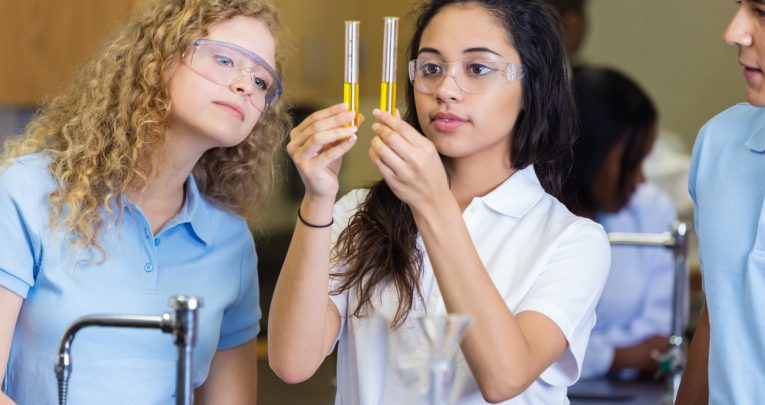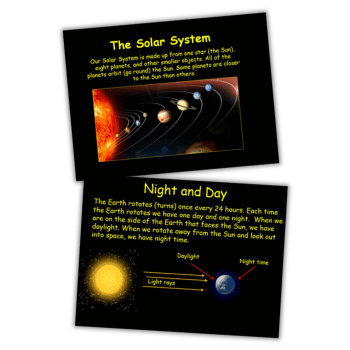What is challenge in science and how should we approach it in schools?

Rosalind Walker offers eight ways to help students delve deep into the scientific study's world of profound explanation and elegant prediction…

To answer the question about how to approach challenge in science we must first carefully consider what exactly challenge in science is.
Some areas of school science are intrinsically more difficult. This isn’t a bad thing. Science has enormous explanatory power and makes use of highly abstract ideas. It is the result of hundreds of years of the best minds in humanity refining its understanding and procedures.
A superficial description of the world would be low-challenge but almost impossibly large and rather uninteresting.
In finding general laws, science makes its description both more interesting and more concise – and this comes at a cost in accessibility. There is elegance and satisfaction to be found in the challenges in science.
The aim of science education, in my opinion, is to induct students into this world of profound explanation and elegant prediction. We should never shy away from content because it is hard.
It is not that science is good because it is hard, but rather that the difficulty of it is an unavoidable side-effect of the greatness of science. Our goal should be (to paraphrase one famous scientist) to make it as easy to understand as possible, but no easier.
What is bad, is if we teach an area poorly because it is hard. So I have tried to analyse why some areas are more challenging in school science, and what strategies might help in these areas.
I have identified around eight reasons for challenge. There is a good deal of overlap between some of them and there may be other reasons I have overlooked.
I have only looked at reasons for challenge within a topic rather than how (exam) questions can be made more challenging, and this is an area that needs further consideration.
Limited as it is though, this analysis allows us to begin to choose strategies in the classroom for making this wonderful content as accessible as possible.
1. Abstraction
Many topics in science deal with ideas rather than everyday, observable objects. Fields, energy and niches are all examples of abstract ideas. These areas are typically high-challenge.
2. Unfamiliarity/point of view
This is related to abstraction but is not always the same thing. For example, understanding the causes of day and night, and the phases of the Moon, involve three tangible, very visible objects that children become familiar with at a very young age.
However, the point of view needed for the explanation is very unfamiliar, as we ask students to leave earth and look at the system from far away in space! This is of course related to misconceptions.
3. Language
It has been said that learning science is like learning a foreign language – I wouldn’t disagree, but it’s so much more as well!
Here are some of the reasons language in science can make an area challenging:
- Specialist terms
- Precision of meaning
- Tier 2 vocabulary
- Lots of reading
- Lots of writing
- Sentence structure
- Science text style
4. Element interactivity
When an area involves many factors which all affect each other and must be considered simultaneously it is said to have high element interactivity. Thus learning the chemical symbols for the periodic table has low element interactivity while understanding the gas laws has high element interactivity.
Such areas are thought to be high challenge because of the strain placed on working memory.
5. Number of steps
I have spent some considerable time wondering whether this is the same thing as element interactivity, and I have come to the conclusion: not always.
There are areas which require long computations or algorithmic approaches, and these are not necessarily high in element interactivity because each step can be taken in turn and there is not a high burden on working memory because of the interplay of the elements.
These areas still hold challenge because of the need to remember and apply a large number of steps, and because of the fact that there are a great many stages in which something can go wrong.
I would perhaps include balancing equations in this group.
6. Foundational knowledge and threshold concepts
Many areas in science can’t be learned effectively unless other foundational knowledge is secure first. In many instances the chain is long and if one step is missed then all the subsequent ones fall apart. Some steps open up the possibility of understanding a great many more things, and these have been called “threshold concepts”.
Some areas in science are hard either because they draw upon a large complement of foundational knowledge or a tricky threshold concept, and a problem lower down the chain reverberates all the way up.
Chemistry seems to be full of these areas, for example properties of ionic structures and electrolysis.
7. Misconceptions
Misconceptions are a significant challenge in science. Students don’t arrive as blank slates, they bring their own theories, and what’s more they construct new (wrong) ones as we teach them.
Forces, electricity and particles are just three of the many misconception hotspots.
What makes a topic fertile ground for misconceptions? Often it’s abstraction, and experience of much more complicated situation: for example, friction always takes energy away from a system and means a force is needed to keep an object moving.
8. Addressing challenge
How should we address these types of challenge? Below is a list matching techniques I’ve been using to the challenge type:
Abstraction
- Modelling eg with physical models, animation, role play
- Analogies
- Explicit teaching of vocabulary
- Diagnostic questions
- Practising writing
Unfamiliarity/point of view
- Modelling
- Diagnostic questions
Language
- Explicit teaching of language
- Examples and non-examples
- Many opportunities for students to practise writing using the language, with scaffolding gradually removed
Element interactivity
- Faded worked examples
- Shed Loads Of Practice (SLOP) to automate some of the elements
Number of steps
- “Atomisation” of the area into the smallest possible parts – treating each step/point individually, teaching each explicitly for mastery before bringing together
- SLOP
Foundational knowledge and threshold concepts
- Careful curriculum planning
- Mastery model
- Cumulative quizzing – spaced retrieval practice
- Mimicry as a stepping stone to understanding
Misconceptions
- Careful sequencing of learning in order to address misconceptions – for example, considering a body in space where there is no friction, and then working up to a situation on Earth
- Being explicit about misconceptions and why we hold them; teaching students to catch themselves slipping into them
- Using demonstrations to challenge misconceptions eg burning steel wool and measuring the mass
Conclusions
There’s a huge amount to think about here, and undoubtedly areas and techniques that I have missed.
There is a lot more reading, thinking and experimenting that I hope to be able to do.
What I have been able to see from this analysis is that things are hard because of the nature of the knowledge, and there are many ways that the nature of the knowledge can make it challenging.
The nature of the knowledge must lead our choice of technique and not the other way round. With all the education research being made accessible at the moment, I feel my chances of teaching the really challenging stuff, really well, have never been higher.
It’s an exciting time to be a science teacher.
Rosalind Walker is a physics teaching and lead practitioner. You can find her at rosalindwalker.wordpress.com and follow her on Twitter at @Rosalindphys.








